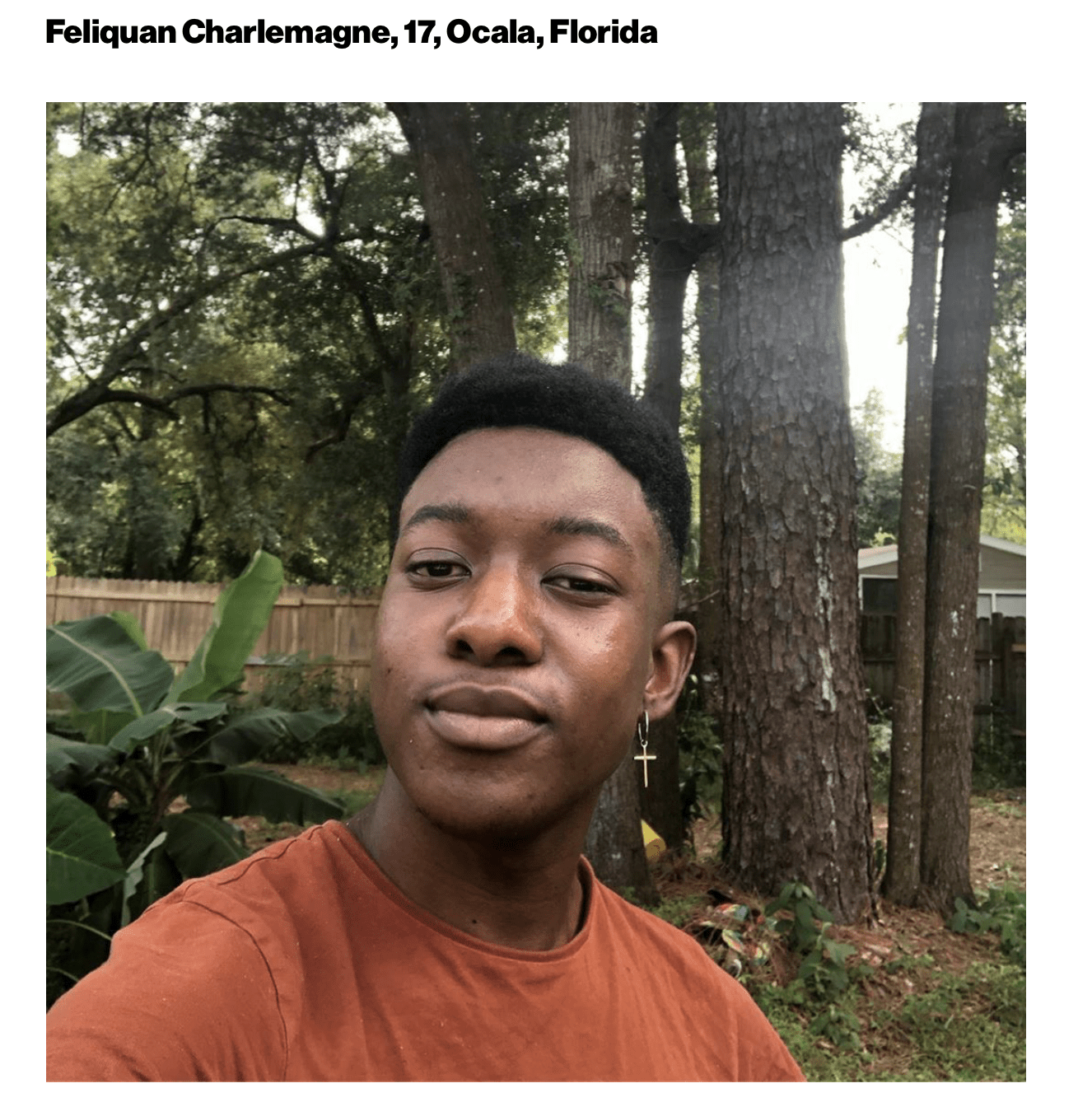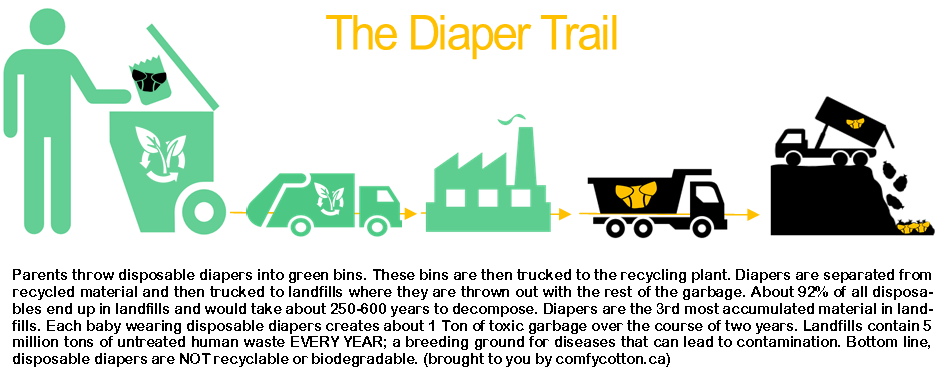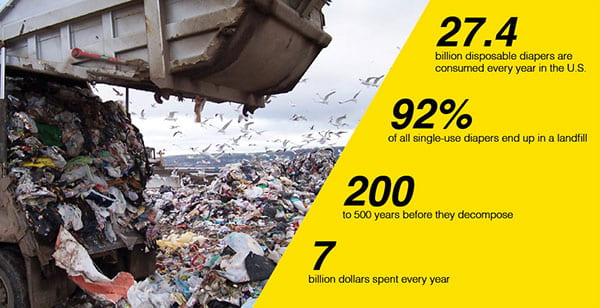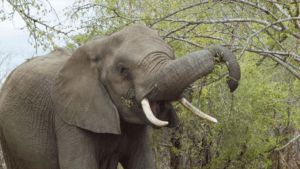During the break, I spent most of my time at home with my family and friends in the city, but on Thanksgiving, I went to my aunt’s house in Armonk, New York. In this video, I compiled videos and photographs of the opposing sceneries, as well as all the people (and pets) that make me feel at home, no matter where I am. Also, some of the city imagery I used is not from this past week, but it all occurred during this past semester.
All posts by Alice Rosenthal
A “Bipartisan Climate Caucus” Means Nothing If It Stands For Nothing
As more and more Americans have come to recognize the existence of climate change, politicians on both sides of the aisle have decided to come together to create the “first bipartisan climate caucus” in order to protect their progeny (many of the members have children and/or grandchildren) as well as to deal with the current and upcoming economic repercussions related to climate change.
One member, Democratic Senator Jeanne Shaheen of New Hampshire shared that the state’s “ski industry is affected, our snowmobiling, our maple-sugaring industry. So many things that people can see”. It makes sense that she is appealing to her constituent’s fiscal concerns in order to “prove” why everyone should be concerned about climate change, but part of me also wonders if there is more she can say about why we all should care regardless of finances. I highly doubt that our world will be saved by a bunch of money-hungry, bureaucratic penpushers, but I will admit that appealing to the public’s greed might be a smart tactic, especially since the “crisis is threatening to cut the U.S. economy up to 10% by century’s end”.
Whatever the caucus’ intentions may be, they have been remarkably slow to implement any policies or even state their opinions since its creation, despite a scientifically-backed urgency for action in regards to climate change. The caucus’ is supposedly going to meet with CEOs of key companies as a first step, but it is unclear what they are going to ask for, or even say to them. Some members of the caucus are “pushing for a carbon tax”, but as Mitt Romney (who seems to be the Republican ringleader of the caucus) clearly states, “I’m not going to say any ‘have to’ with regards to climate. I think all the ideas will be on the table”.
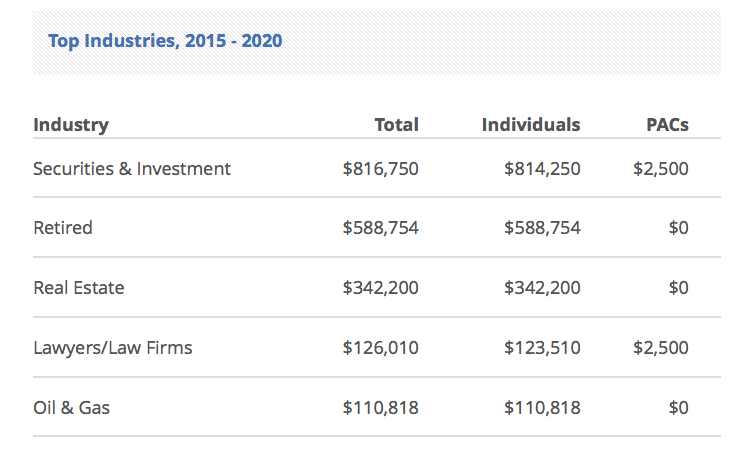
We clearly have no more time left on this Earth for political shmoozing and maneuvering, especially from politicians who are funded by an industry with completely opposing interests to those of the climate justice movement (cough cough Mitt Romney). Other members of the caucus, such as Maine Senator Angus King, seem to agree with Romney’s position stating “my philosophy is let’s take small steps, [and] find some things we can succeed on”. That certainly does not sound like the words of a reliable, world-changing leader to me. I can literally feel this whole caucus’ hesitation and appalling lack of urgency from behind my screen, but the clock’s still ticking!
An Upcoming Environmental Crisis — and Evangelical Split?
In a world full of technological, medical and scientific advances, one might be surprised to learn that religion — societal concept conceived during a time when the common cold was a death sentence and freezing to death within one’s own home was a fully possible scenario — is still a defining presence within the present.
Then again, that “one” person who questions this represents an incredibly small percentage of the current world’s population — 16% to be exact. For this exact reason, religion and the state of our world must be considered in tandem if we are to resolve the current environmental crisis that has begun and only will continue to disastrously intensify and destroy whole countries, communities, and cultures.
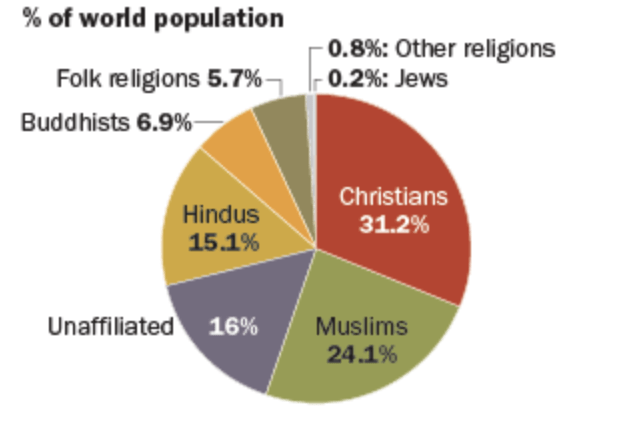
I don’t declare this statement lightly — after all, I belong within that 16 percent, as an atheist. Frankly, I believe religion has no place within topics of great societal importance. such as political or economic policies — separation of Church and State is a thing after all — but desperate times call for desperate measures. In a time when report after report declares the Earth and its inhabitants as all basically doomed if carbon production and other climate change catalysts are not immediately halted on an unprecedented scale, I think we can take all the help we can get within the climate justice movement — as close to that 84 percent as we can reach.
While reading The Week’s feature article entitled “How does religion influence our thoughts on climate change?“, I was relieved to learn that a surprisingly large amount of religious organizations and its leaders have asserted that we have a crucial role to play in order to protect the Earth, rather than destroy it. This assertion is grounded in a distinct interpretation of a religious notion known as the “dominion mandate”, a notion that has sparked tension and debate over centuries and across religions. One version of dominion, the one which Pope Francis outlines within the Climate Encyclical, Laudato si’, categorizes humans as superior to non-human animals, but also acknowledges that this does not allow us the right to exploit natural resources without limit, regardless of profitability. Most other religious systems agree with this sentiment in some form or another, such as Buddhism (Bhutanese Buddhism specifically), Islam (except Wahhabism), and inherited cosmovision (autonomy of nature, collective rights to sacred lands, etc), a view held by indigenous peoples worldwide.
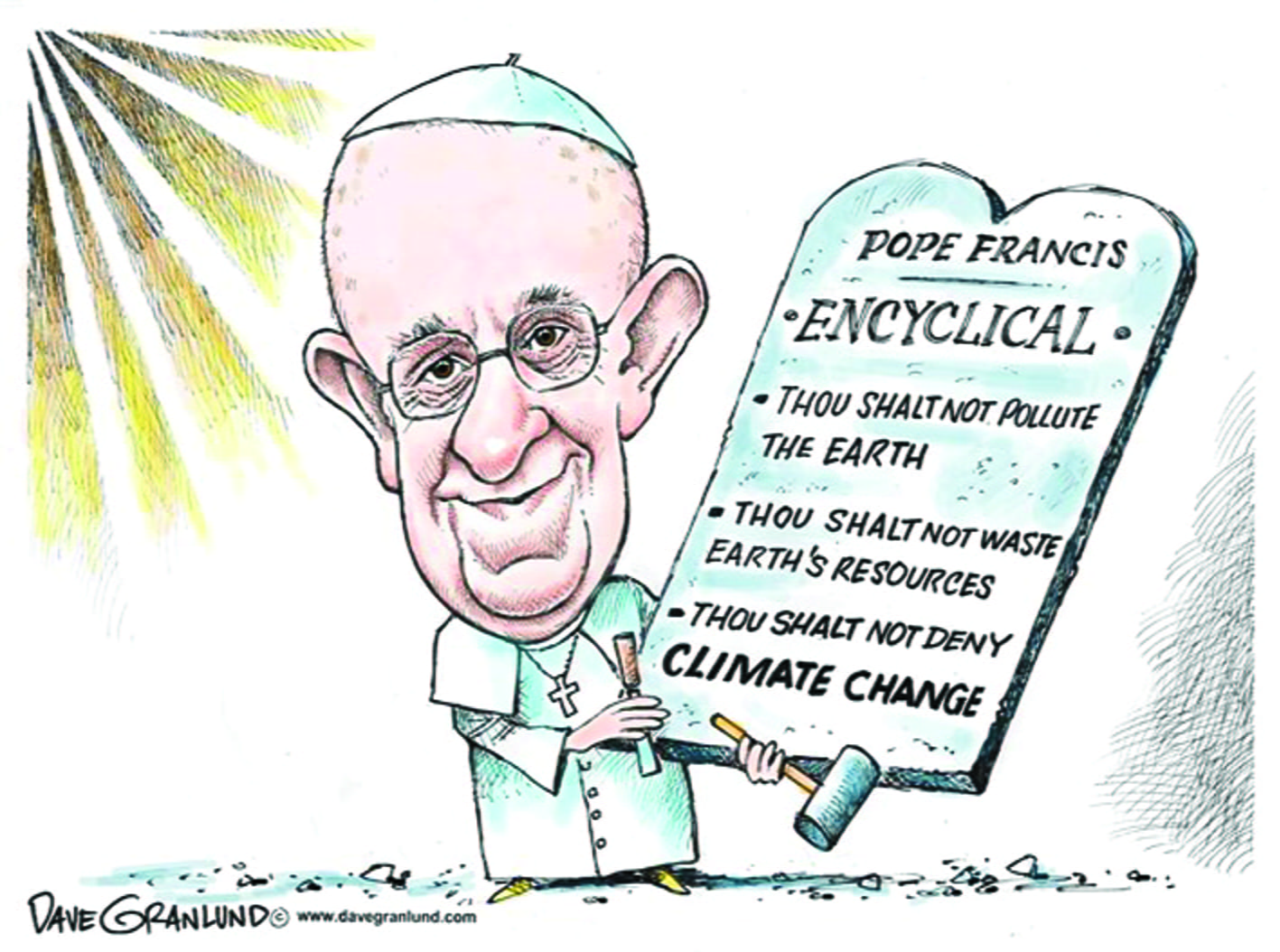
So why then is religion in countries such as America, Saudi Arabia and China attributed to climate change in such a negative form? Well, to put it simply, it all comes back to politics and greed.
All three of these countries are economic superpowers due in no small part to the fossil fuel industry, which relies on constant utilization (and therefore, destruction) of natural resources. They are also vastly religious nations, but their interpretation of the dominion mandate is markedly more fiscally motivated than it is environmentally friendly.
The inherent problem with religious texts in a modern world is that we are incredibly separated from its original source time-wise, so our interpretations and translations may not be quite as accurate and holy as is perceived. The passing of time always leaves room for information gaps, and we must question who was (and is) left in charge of filling in these blanks.
In America, white Christian evangelicals make up the majority of climate change deniers, whereas non-white evangelicals in the U.S., and evangelicals in other countries are much less likely to speculate on its credibility. It does not seem coincidental then, that this distinct faction of evangelicals, is one of disproportionately high socio-economic and -political status and influence.

It is clear to me that we must appeal to religious people if we want to see any real change within the climate justice movement. It is also clear that we must call out instances in which religion is skillfully inserted within political conversations by those who financially benefit from the fossil fuel industry (such as politicians themselves and their fiscal supporters). No matter how much they explain away their greedy practices and utter disregard for the implementations of environment protection, we owe it to ourselves to stand up for the land in which we inhabit. Regardless of whether we identify as a believer in the dominion mandate or not, as Buddhist or Christian, Republican or Democrat, American or Indonesian, you name it — we will not have an Earth left to inhabit if we don’t do something, and fast.
The Sixth Extinction
Humans have been exterminating the planet since the beginning of our existence, starting with wooly mammoths and other megafauna during the Ice Age. This is not normal. No other species has caused such large destruction to the Earth which houses us all. At present, the rate of extinction is 100 to 1,000 times higher than the natural rate due to our widespread CO2 usage, habitat destruction, and consumerism. In turn, this wave of extinctions (which is only the sixth mass extinction event in Earth’s history) has been coined the “Age of the Anthropocene”.
In the video below, I researched animals that have gone extinct or that are critically endangered in countries I personally have traveled to. Many of these animals were the once thought of as a defining factor in their native country’s history, such as the Scottish Wildcat, which can be found on various Scottish family crests throughout history, or the Golden Toad of Costa Rica, which was literally known as the “poster child of biodiversity” on the island.
Luckily, there are various conservation groups fighting to protect the last living members of endangered species (such as the Scottish Wildcat), and I have decided that from now on, when I travel, I will volunteer my time with these groups as much as I possibly can. We may not be able to save every species, but this is a man-made war on the world, so the least I can do is travel with purpose.
I also used the song “No One Cares” by Atreyu in the background. I think this is just one of those angsty songs that makes you feel angry and hurt no matter who you are. We cannot afford to stay apathetic while we discuss the pain and destruction we all contribute to as human beings, so I thought this was an apt song choice.
Song Credit:
Atreyu. “No One Cares.” Lead Sails Paper Anchor, John Feldmann, Hollywood Records, California, 28 Aug. 2007.
Why Greta Thunberg is Probably the Only Youth Climate Activist You’ve Heard Of
Greta Thunburg has been making waves on social media, in national headlines and during policy debates. But why her? She is not the first youth leader to join the fight for climate justice — but she is white. As a privileged white person growing up in a wealthy Manhattan bubble, my voice is almost always heard too, and when it isn’t, I am capable of fighting back to take up that space without genuine repercussions. People of color (POC) often do not have this same privilege and guarantee of safety, and yet, time and time again they have led the majority of direct action social movements historically (think Gandhi, MLK, Mandela, Rosa Parks, and so forth).

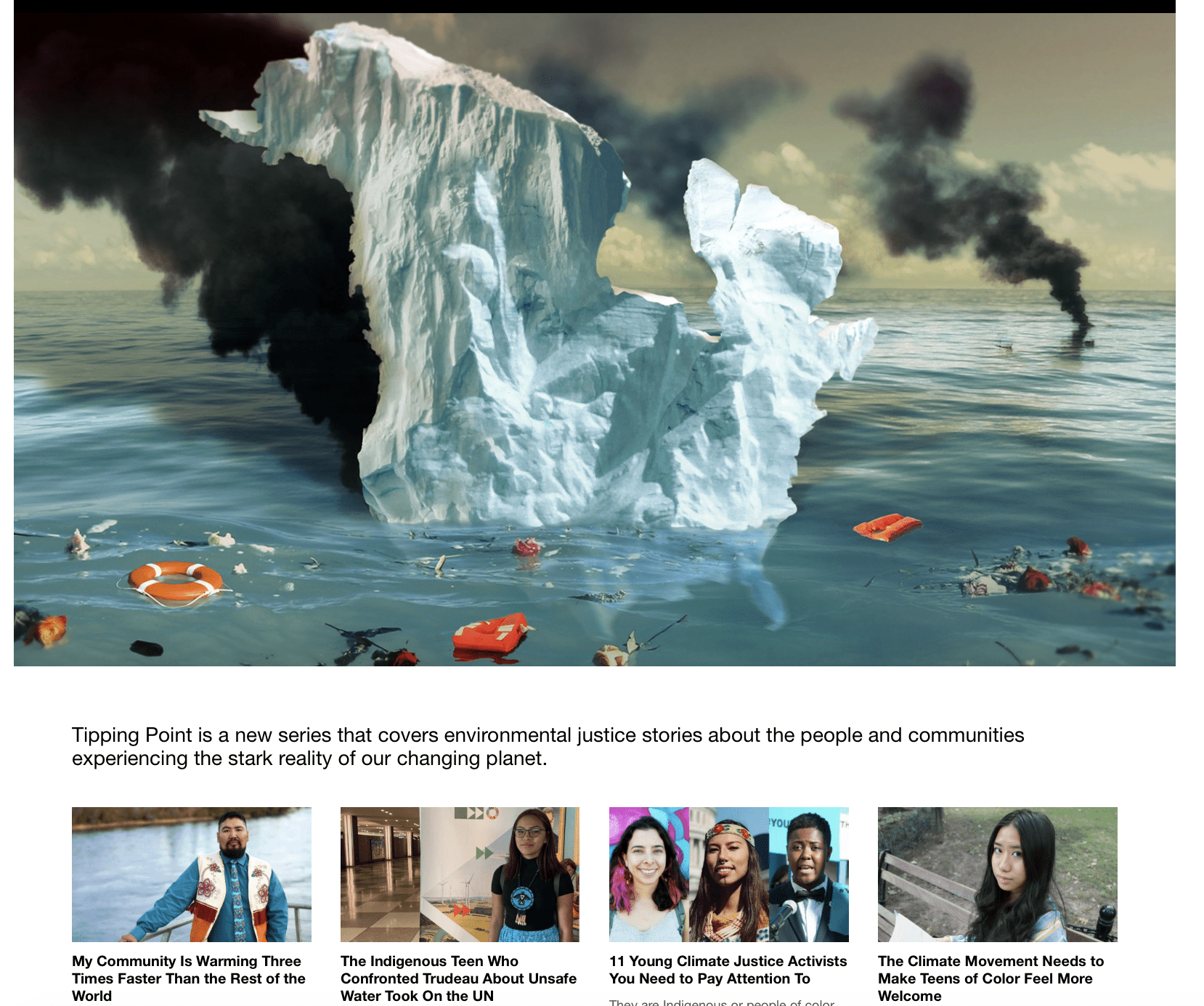 As Amira Odeh Quiñones, regional organizer for 350.org and survivor of Hurricane Maria so astutely put it, “[frontline] communities should be in this conversation because whatever policy is decided will be key for us to be able to survive”. They also serve as a physical reminder to us all that climate change is not some abstract future consequence for later generations to deal with, rather it is “something that’s happening in peoples’ lives every single day”.
As Amira Odeh Quiñones, regional organizer for 350.org and survivor of Hurricane Maria so astutely put it, “[frontline] communities should be in this conversation because whatever policy is decided will be key for us to be able to survive”. They also serve as a physical reminder to us all that climate change is not some abstract future consequence for later generations to deal with, rather it is “something that’s happening in peoples’ lives every single day”.
When the media highlights POC activists at the forefront of the movement, everyday readers are more able to recognize the true urgency of this fight, as “solutions have much more depth [when] Black and brown voices are centered”, says Feliquan Charlemagne, the national creative director of the U.S. Youth Climate Strike.
Besides, even if climate change was just a problem for the next generation or so, it does not negate anybody who is currently alive of our responsibility to protect the planet. Makaśa Looking Horse, an indigenous water activist taking on the corporate giant Nestlé in Canada, recognizes this point, as we all should, stating that it is her “inherent responsibility to [her] people to protect them and look out for the next seven generations”.

Recycling Plastic Just Got A Whole Lot Easier
Proctor & Gamble is one of the largest consumer goods conglomerates in the world, selling basically every plastic-based product we use on a day to day basis– from Pampers to Pantene, Tide to Tampax — most of which end up among the 25 million tons of plastic dumped in landfills every single year.
A lot of these products are made from a rigid plastic material called polypropylene that has essentially been impossible to recycle (well, at least recycling it was incredibly unprofitable because it would smell and look terrible) — until now. Now, products such as “broken hangers, old carpets, and even a disposable diaper” can and will be recycled into “pristine, clear plastic”. P&G chemist John Layman was the man behind this environmentally- (and financially-) friendly discovery. His process turns this difficult plastic into “clear, odorless, non-toxic pellets that can be used to make a 100% recycled bottle” and uses significantly less energy than it does to make brand new, “virgin” polypropylene.

Previous to this new recycling methodology, only 3% of polypropylene was recycled, but PureCycle Technologies (the P&G division in charge of this process) has already presold all of the recycled polypropylene its factories will produce to companies such as Nestlé and L’Oreal for the next 20 years and more, meaning there is a huge commercial desire for recycled plastic!
It seems very clear to me that the only thing businesses are interested in is fiscal return. Commercial interests are clearly tied to consumer desires, but only if there is a financial gain to be made. Shunning and pressuring companies to be more environmental conscious can only succeed if there is also a clear solution to be found that does not flush money down the drain. It is my opinion that eco-friendly organizations need to take note of this and create more win-win initiatives such as this one described above!
Environmental Racism and its Connections to Intelligence
In this article by The Years Project, two POC authors, Harriet Washington and Beth Gardiner, describe the devastating impacts of environmental racism on black and brown populations in America.
They believe environmental racism provides a definitive “explanation for the apparent gap in IQ test scores” between white and POC Americans (as well as testing biases and inadequate school funding, among other systematically racist policies in education). Due to the inherently racist and money-hungry systems at work within the fossil fuel industry, air pollution disproportionally affects POC neighborhoods, and not just poor POC neighborhoods. This is more an issue of racism than classism, because impoverished white areas are less exposed overall to environmental toxins than are black people who make $50,000 to $60,000 a year. In turn, these areas have seen extremely high rates of asthma and hypoxia within recent years. When there is less oxygen in the brain, neuron death occurs, resulting in “loss of cognition” over time. Furthermore, asthma affects “processing speed, attention, learning and memory”.
My ex-boyfriend is an asthmatic who grew up in Brownsville, with a waste treatment plant within a three block radius from his childhood home. I wonder how much this had an impact on his wellbeing and his mother’s health while in-utero.
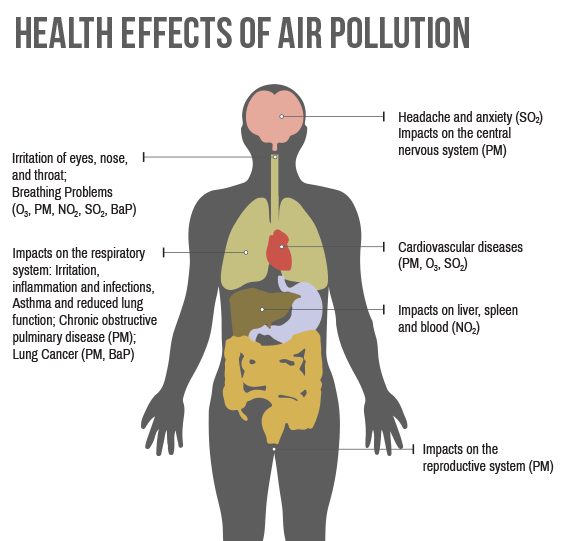

I cannot in good conscience report only on subjects that affect me, because I am one of the lucky ones. I am white, relatively wealthy, and despite growing up in an urban setting, I live miles and miles away from these highly polluted areas described above. I am at NYU, partially because my family can manage without financial aid, and because my grades and test scores were high enough to get me here. But who knows if I would be here otherwise? What if I had grown up right next to the waste treatment plant too? I wonder how my academic capabilities would be effected.
This is exactly the reason why environmental racism is not a “them” problem. Raising awareness and accepting partial responsibility is the first step towards change. It is our job to discuss these corporation’s criminal behaviors, especially if I am myself benefitting due to it (unintentionally or not).
Idle Threats On My Morning Commute
- 9/10/19, noon, E 10th St, near School Zone, Uber/Lyft (left idling less than a block away from elementary school for 5 minutes)
- 9/10/19, noon, E 10th St, near School Zone, Taxi on Lunch Break (driver was eating in car for 10 minutes with engine on less than a block away from the elementary school)
- 9/10/19, noon, W 10th St, Department Of Transportation Government Vehicle (driver was on phone, breaking the same idling law they are supposed to enforce)
- 9/10/19, noon, E 10th St, near School Zone, Van (nobody was in this double-parked van about a block away from the elementary school and its engine was making loud noises)
Elephants and Monkeys are Working Harder to Reverse the Effects of Climate Change than Most Humans…
As described in this article by The Years Project, Dr. Stephen Blake is a biology professor who studies the ways in which animals, specifically African elephants and tamarin monkeys, work to protect the planet from climate change. Referring to them as “gardeners of the forest”, he explains that elephants disperse a hundred or so different seed species over large distances as they forage. In turn, this helps create new trees that can further soak up increasing carbon levels. Furthermore, elephants have changed their diet by avoiding the slower-growing trees that are loaded up with carbon (as it otherwise would be released into the atmosphere).
Most humans, on the other hand, refuse to change their diet to a more Earth-friendly option. According to Business Insider, the meat industry accounts for “18% of human-produced greenhouse gas emissions”. For every single American that eats meat, a whopping 3.5 kg of carbon-emissions is released into the atmosphere per day. To produce meat substitutes, the carbon-emission cost is only 0.6 kg per person, per day.
I am perpetually stunned at the choices we make as a species. We would rather live in complete ignorance and denial than recognize the individual dietary changes we need to make in order to save this planet, and yet the elephant, a species that is literally being hunted into extinction by the minute, is willing to do so themselves. I have made the choice to go vegan, and yeah it was difficult. But it was an incredibly necessary one. I chose to be both selfless for the animals, the environment, the workers, and the world, but by doing so I am also being selfish — without the world, there is no me.
Even the tiny, 10-inch long tamarin monkey is doing it’s part to protect and nurture trees and the environment. Their feces contain undigested seeds that effectively plants trees within desolate, abandoned pastures originally cleared by humans throughout the Peruvian rainforest. Unfortunately, climate change is likely disrupting this natural seed dispersal, as it may be negatively impacting the growth cycle of the plants that tamarins eat. While not critically endangered as of yet, they also face the serious threat of deforestation and are sometimes hunted and captured as pets. Elephants have it even worse. According to the video accompanying this article, they have experienced a dramatic decrease in their population over the past century — from 10 million in 1930 to 350,000 in 2016. This is mostly due to poaching, but also to long-lasting, increasingly-common droughts brought about by climate-change.
We cannot rely on tamarins or elephants to fix the problems we caused, especially if they are in very real danger themselves — but we can learn from them. It’s time for us to take accountability and do whatever we can to help our dying planet, even if that means exchanging a bacon cheeseburger for an Impossible patty.

